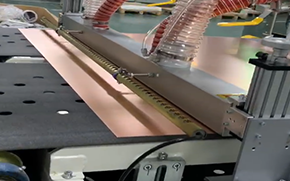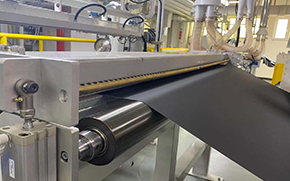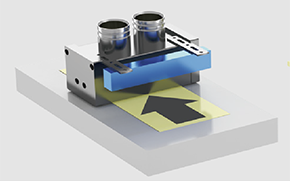Understanding Axial Tension Sensors: A Comprehensive Guide
Date:
2025-03-27
Axial tension sensors, also known as tension load cells or tensile sensors, play a critical role in various applications where the measurement of tensile forces is essential. These sensors are designed to detect and measure the axial tension force exerted along their axis, translating this force into an electrical signal that can be easily monitored and recorded. The precise measurement of tension is vital in numerous industries, including construction, manufacturing, and aerospace, where safety and performance are paramount.
The fundamental working principle of an axial tension sensor involves the use of strain gauges. These gauges convert the mechanical deformation caused by tensile forces into an electrical signal. When a load is applied to the sensor, it deforms slightly, and the strain gauges detect this deformation, resulting in a change in electrical resistance. This change can then be calibrated to provide a direct measurement of the axial tension force.
One of the most significant advantages of using axial tension sensors is their ability to provide real-time data. This capability is crucial in applications such as monitoring the tension of cables in suspension bridges, ensuring that the load distribution remains safe and within design limits. Moreover, these sensors are utilized in manufacturing processes where accurate tension measurement is necessary for quality assurance, such as in the production of cables, ropes, and various structural components.
In addition, axial tension sensors are often integrated into automated systems, enhancing their functionality and efficiency. By incorporating these sensors into control systems, operators can monitor tension continuously and make adjustments in real-time, reducing the risk of failure or accidents due to excessive or insufficient tension.
The versatility of axial tension sensors extends to their various configurations and types, which can be tailored to specific applications. For instance, some sensors are designed for high-precision measurement in laboratory settings, while others are built for rugged environments where durability and resistance to environmental factors, such as temperature and humidity, are necessary.
When selecting an axial tension sensor, it is essential to consider factors such as the maximum load capacity, sensitivity, and calibration requirements. Additionally, understanding the specific application and environmental conditions will help in choosing the most suitable sensor type for optimal performance.
In summary, axial tension sensors are indispensable tools in modern industries, providing accurate tension measurements that enhance safety, efficiency, and reliability. Their ability to deliver real-time data makes them crucial in applications ranging from construction to manufacturing, ensuring that systems operate within safe limits and improving overall performance. As technology continues to advance, the role of axial tension sensors will undoubtedly expand, further solidifying their importance in the engineering landscape.
The fundamental working principle of an axial tension sensor involves the use of strain gauges. These gauges convert the mechanical deformation caused by tensile forces into an electrical signal. When a load is applied to the sensor, it deforms slightly, and the strain gauges detect this deformation, resulting in a change in electrical resistance. This change can then be calibrated to provide a direct measurement of the axial tension force.
One of the most significant advantages of using axial tension sensors is their ability to provide real-time data. This capability is crucial in applications such as monitoring the tension of cables in suspension bridges, ensuring that the load distribution remains safe and within design limits. Moreover, these sensors are utilized in manufacturing processes where accurate tension measurement is necessary for quality assurance, such as in the production of cables, ropes, and various structural components.
In addition, axial tension sensors are often integrated into automated systems, enhancing their functionality and efficiency. By incorporating these sensors into control systems, operators can monitor tension continuously and make adjustments in real-time, reducing the risk of failure or accidents due to excessive or insufficient tension.
The versatility of axial tension sensors extends to their various configurations and types, which can be tailored to specific applications. For instance, some sensors are designed for high-precision measurement in laboratory settings, while others are built for rugged environments where durability and resistance to environmental factors, such as temperature and humidity, are necessary.
When selecting an axial tension sensor, it is essential to consider factors such as the maximum load capacity, sensitivity, and calibration requirements. Additionally, understanding the specific application and environmental conditions will help in choosing the most suitable sensor type for optimal performance.
In summary, axial tension sensors are indispensable tools in modern industries, providing accurate tension measurements that enhance safety, efficiency, and reliability. Their ability to deliver real-time data makes them crucial in applications ranging from construction to manufacturing, ensuring that systems operate within safe limits and improving overall performance. As technology continues to advance, the role of axial tension sensors will undoubtedly expand, further solidifying their importance in the engineering landscape.
Related information









